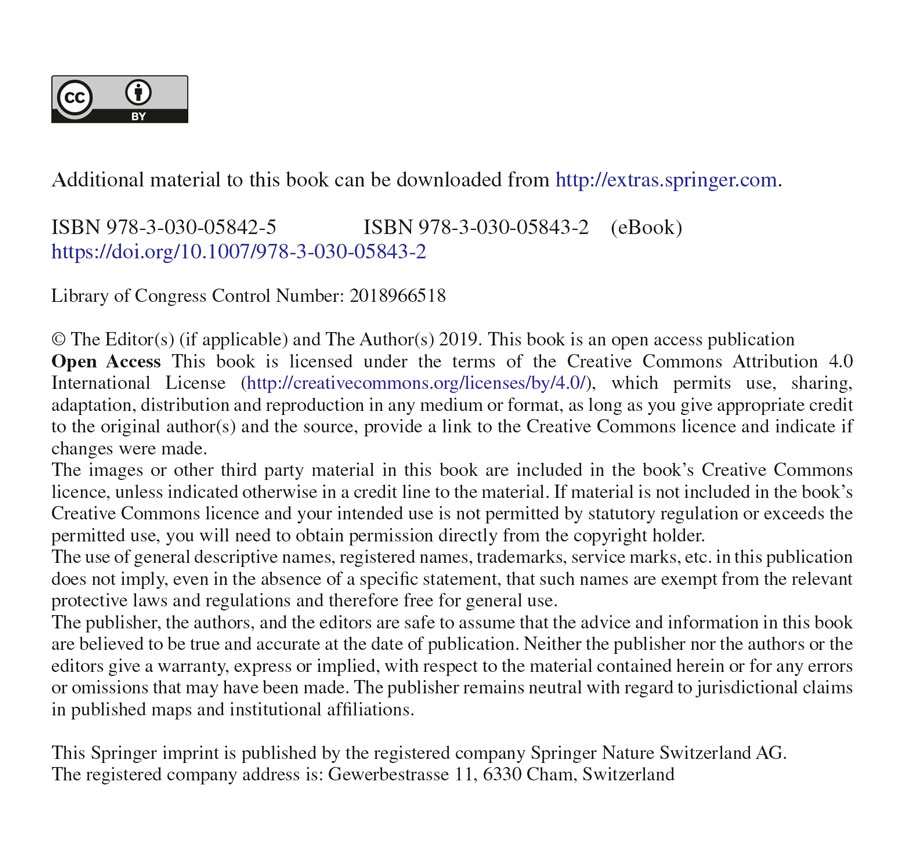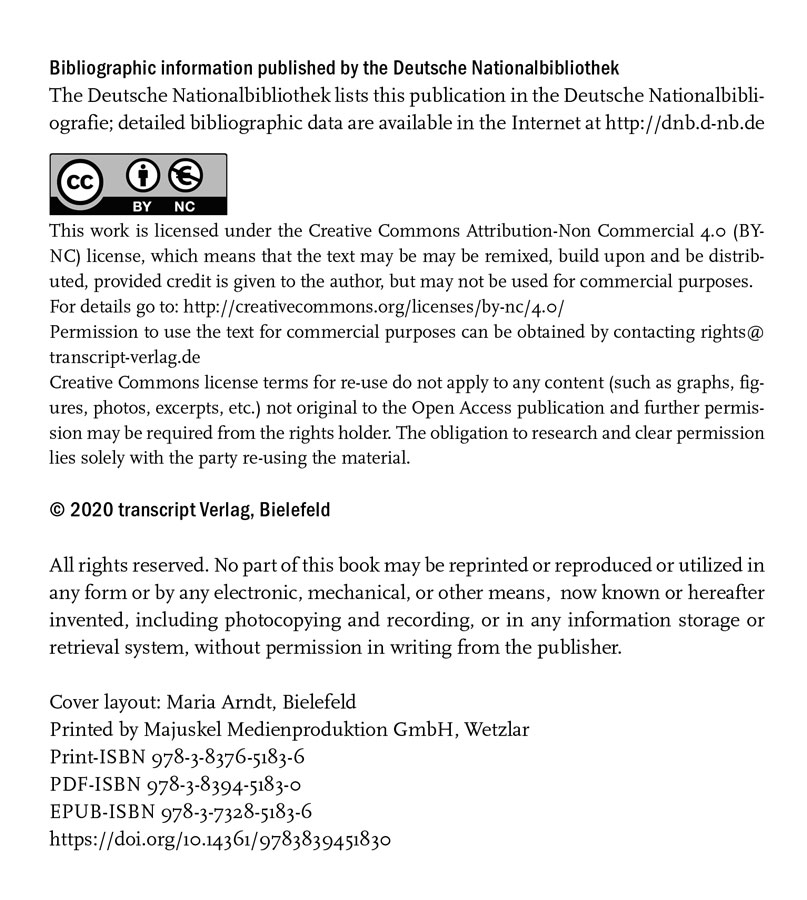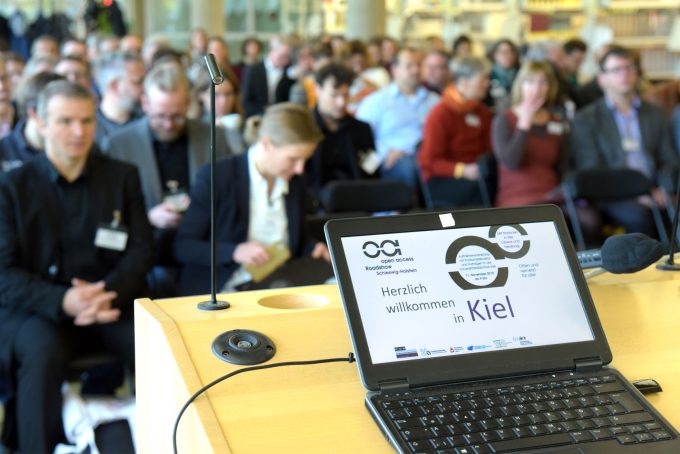
Third-Party Material in Open Access Monographs: How Far-Reaching is the Creative Commons Licence Really?
The progress of the Open Access movement does not stop for monographs, meaning that they are increasingly being published under the Creative Commons licence. But what happens if third-party material with a different licence is used in the monographs? Ralf Flohr, Stefanie Richter and Olaf Siegert have been taking a look at this tricky question.
by Ralf Flohr, Stefanie Richter and Olaf Siegert
Background to Open Access monographs
Open Access monographs are playing an increasingly important role in the Open Access transformation of the publication system: Specialist publishers have reacted to this development and come up with new business models for the publication of books in Open Access (OA). Organisations that promote research and research institutions themselves have established publication funds and provide the financial resources for Open Access publications. Libraries are archiving Open Access publications on their in-house publication servers, making them accessible to the public and ensuring both their visibility and long-term availability.
Use of the Creative Commons licence
The question of who is allowed to use an Open Access publication and how is usually regulated with a Creative Commons licence (CC licence) linked to every document. This opens up, for example, depending on how it is structured and under certain conditions, the right to copy, store, archive, redistribute the publication and make it publicly accessible, without having to ask the respective rights holder for consent. Libraries also use the CC licences in this way to incorporate Open Access publications into their stocks and disseminate them. Creative Commons licences thus make barrier-free access to scientific publications possible in the first place.
Problems with OA monographs containing third-party material
However, there are problems with the implementation here, particularly regarding the Open Access monographs. Things becomes particularly difficult if third-party material which is subject to another licence is used. The third-party material can mean illustrations, photographs, charts, tables and other diagrams, for example.
If the authors are unable to invoke citation law, they need to get the approval of the rights holder before incorporating this material in their monograph. In many cases, the third-party material is not subject to the Creative Commons licence applicable to the monograph. Authors are much more likely to use third-party material on the basis of another licence that does not confer the same usage possibilities as the CC licence. The principle of ‘all rights reserved’ usually applies to this material. Detailed guidance on handling thirdparty materials can also be found in the OA Books Toolkit from Open Access Publishing in European Networks (OAPEN).
In the Quality standards for getting started with Open Access provision of books (PDF) published by the National Contact Point Open Access OA2020-DE, the following is stated on the inclusion of third-party materials under the point rights and licences:
“The rights for illustrations and other external material in the books are clarified, clearly stated and do not hinder the provision of the entire work under a Creative Commons licence.”
Unfortunately, this is often not the case in practice, because some academic publishers furnish the Creative Commons licences of Open Access monographs with restrictions for third-party material. Here are two examples:

Example 2
Teske, Sven (ed.): Achieving the Paris Climate Agreement Goals, Springer Nature, Cham, 2020.
Publishers cover their backs with blanket policy
The Open Access use of the entire work is actually impeded in practice when external material is included, if this material is not subject to the Creative Commons licence as well. In their imprints, the publishers often point out – as standard practice – that further usage rights must be obtained from the respective rights holder for the reuse of this material, even if no such third-party material appears in the monograph in question. This restriction also applies to laws of use which would be covered by the Creative Commons licence per se, for example the permission to disseminate. With the blanket restrictions in the imprint information, the publishers protect themselves in the event that conflicts arise with the rights holders in the further use of the publications. This thereby severely restricts the opportunities that actually arise from the CC licence and creates major challenges for those who would like to reuse the works according to the principles of Creative Commons.
Difficult Open Access use in practice
This practice of blanket restrictions is problematic for the dissemination of Open Access publications, particularly for monographs. Obtaining permission for further use, by people who operate repositories for example, is often difficult, representing a hurdle for free dissemination. This means that the monographs cannot be used comprehensively according to the principles of Open Access. Possible usage scenarios, such as publication in scientific and social networks such as ResearchGate and Academia.edu, and use as Open Educational Resources (OER) are also made more difficult.
Then again, from a scientific perspective, it would not make sense to disseminate the monographs without the third-party material they contain. Strictly speaking, such monographs can therefore no longer be described as Open Access publications according to the principles of the Berlin Declaration on Open Access to Knowledge in the Sciences and Humanities. Rather, it is a form of free Open Access that essentially provides read-only access. A further problem occurs if these documents with machine-readable data are declared to be Creative Commons publications and documented in the relevant search engines, but then cannot be comprehensively used as such.
Recommended actions for stakeholders
On the basis of the aspects mentioned above, we believe that this practice of restricted CC licences has a detrimental effect on the development of Open Access. The question is how to prevent this practice in the future, or how to ensure that Open Access publications are provided with unrestricted CC licences. To this end, we have put together some recommendations for the various stakeholders.
What authors and publishers can do:
- Clarify the rights of third-party material in advance so that comprehensive use according to the principles of Open Access is possible. Third-party material should be incorporated into the work according to the principles of the citation law.
- If this is not possible, licence-free third-party material should be used, or third-party material for which a compatible Creative Commons licence can be agreed with the rights holders.
- Publishers should refrain from making blanket restrictions if no third-party material is even used in the work.
What Open Access commissioners, libraries and promotion funds can do:
- A decisive factor is explaining the legal consequences of using third-party material in Open Access monographs to authors and advising them.
- Organisations that promote Open Access monographs should ideally only fund those works which contain no restrictions of the Creative Commons licence.
This might also interest you:
This text has been translated from German.
Ralf Flohr is a scientific employee in the Publication Services Department and Content Manager of EconStor at the ZBW – Leibniz Information Centre for Economics. He can also be found on LinkedIn.
Olaf Siegert is head of the Publication Services department and Open Access Representative of the ZBW – Leibniz Information Centre for Economics. He is involved with open access as part of his work at the ZBW and is also active for the Leibniz Association, where he represents the Leibniz Open Access working group in external committees. He is involved in the Alliance of Science Organisations in the working group Scientific Publication System and at Science Europe for the Leibniz Association.
Stefanie Richter has been working in licence management at the ZBW – Leibniz Information Centre for Economics since 2010. In this capacity, she negotiates and manages licence agreements for the ZBW as well as for supraregional consortia, which increasingly include an Open Access publish component.
View Comments

Barcamp Open Science 2021: Opening up New Perspectives
"Almost as good as ‘the real one’" was the feedback of one contributor on the seventh...




